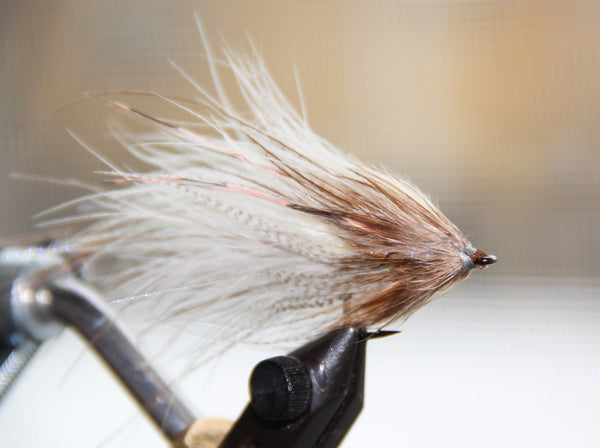Don't Poke Me
Perhaps the most overlooked fly feature by fly tiers, or even consumers of tied goods, is the actual hook. At the end of the day, we are all really out there to catch a few fish, not count the number of bumps we racked up. While an actual hook set may aid some anglers, the hook and its position might help you poke a few more fish.

Disclaimer: While the choice in hook, style, and position is cornerstone to any well-designed fly; the entirety of this post and subsequent posts will focus on streamer hook, style, and position. This week, we will look at a singular bug style fished one way.
The harsh reality is that not all hooks are created equal, therefore not all bugs are created equal. This begs the question: What makes a good bug? Insane amounts of flash? A designer name next to it? I venture to say a provocative profile and an effective hook will always make a great bug.
Then what makes a hook effective?
Before we can address the effectivity of a hook, we must think about how it will be fished and ultimately consumed. While a plethora of ways to fish a streamer have been conceived, they all boil down to two styles preformed two ways: Stripped or swung from the boat or from the wade. The way a fly is fished dictates how the fish will see the fly: speed, angle, depth, etc. In addition to that, we must evaluate what our offering is mimicking. The profile of the fly is the first thing a trout sees when the fly is presented. First impressions are everything, after all. I would wager that this first impression heavily influences how a trout will proceed; this includes the all-important eat.
Once we have an idea how the fly will be fished and consumed, the hook’s effectivity can be determined through its unique anatomy. By understanding the various parts of a hook, we can optimize our hook selection, thereby creating the ideal platform to construct each pattern. Moreover, we can move the hook throughout the pattern with the use of wire, braid, or fluoro. The orientation of the hook can also be changed.

For stripped minnow patterns from a boat, I prefer a short shanked, wide-gap, straight eye hook. A stripped minnow from a boat generally shows the fish a side or quartering-side profile between 90% and 100% of the time it’s being fished. This means the fish downstream are seeing a minnow’s profile. The majority of the time, fish will approach a fly in one of two ways. The first being a T-Bone style attack where it’s grabbing to investigate or kill. The second being a true head-first eat. I can hear a genuine California Couch Guide yelling at his iPhone now, “Minnow patterns get followed and short struck all the time!” Of all the follows, only a percentage of those actually elicit a true short strike. So while the fish is behind your fly, it really doesn’t matter unless he touches it. The fish is primarily targeting the middle to the head of the fly, thus we have a short shank to keep the point of the hook where the action is going to happen. In addition, a short shank hook also lessens the leverage the fish has through the shank, keeping him buttoned up more of the time. The longer the shank, the more often a fish will “throw” a fly. Minnow patterns generally increase in bulk from tail to head. Because of this, we want a wide gaped hook to keep the effective gap large. The effective gap is the amount of gap actually there to hook and hold the fish. The weight contained in the bend of the hook provides the keel for the fly- while this can be manipulated to ride “hook up” I find the traditional “hook down” approach provides a much more consistent bug. I prefer the straight-eye to the down or up-eye in most situations because cones and beads orient properly against them and I love the effect a singular tungsten bead has.
A few of my favorite hooks -
Ahrex NS172
Ahrex TP610
Daiichi 3111
GAMAKATSU B10-s
Partridge Attitude Extra
- Pierce Oja



Comments 0